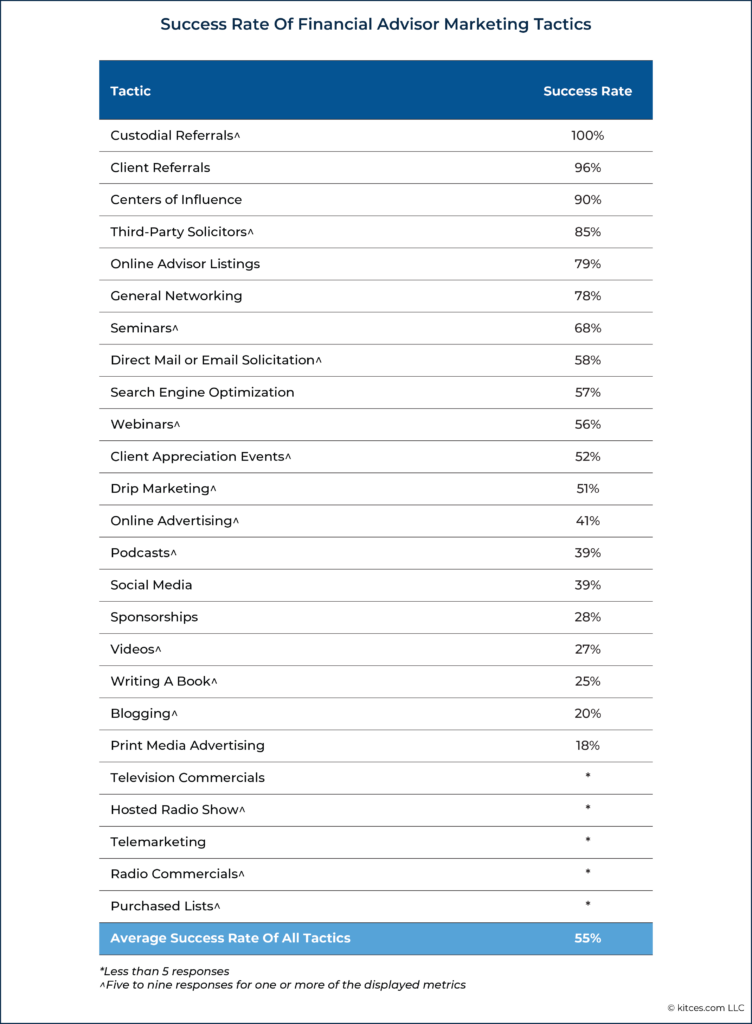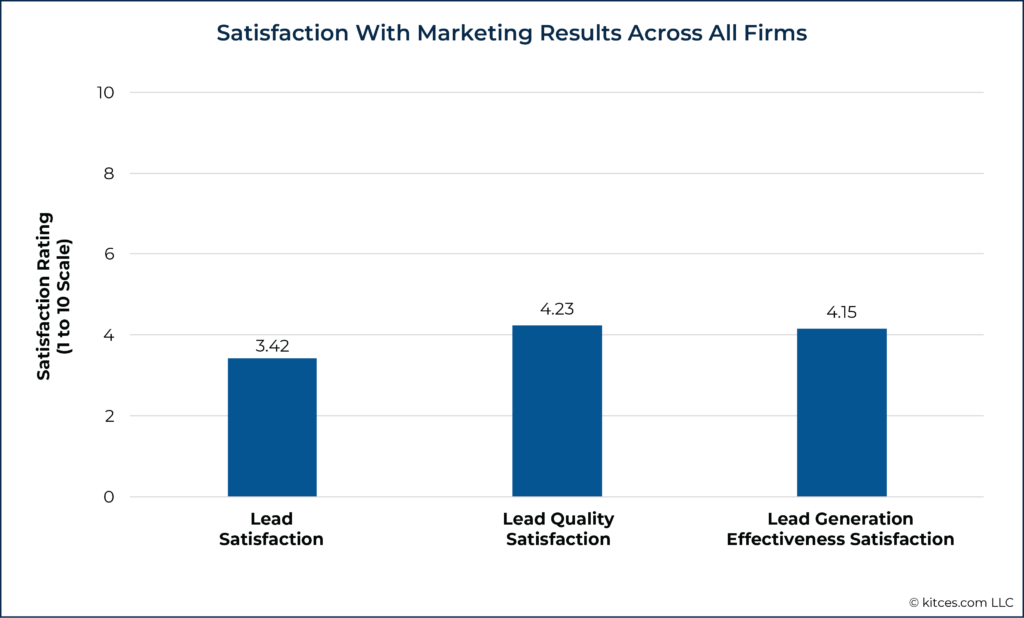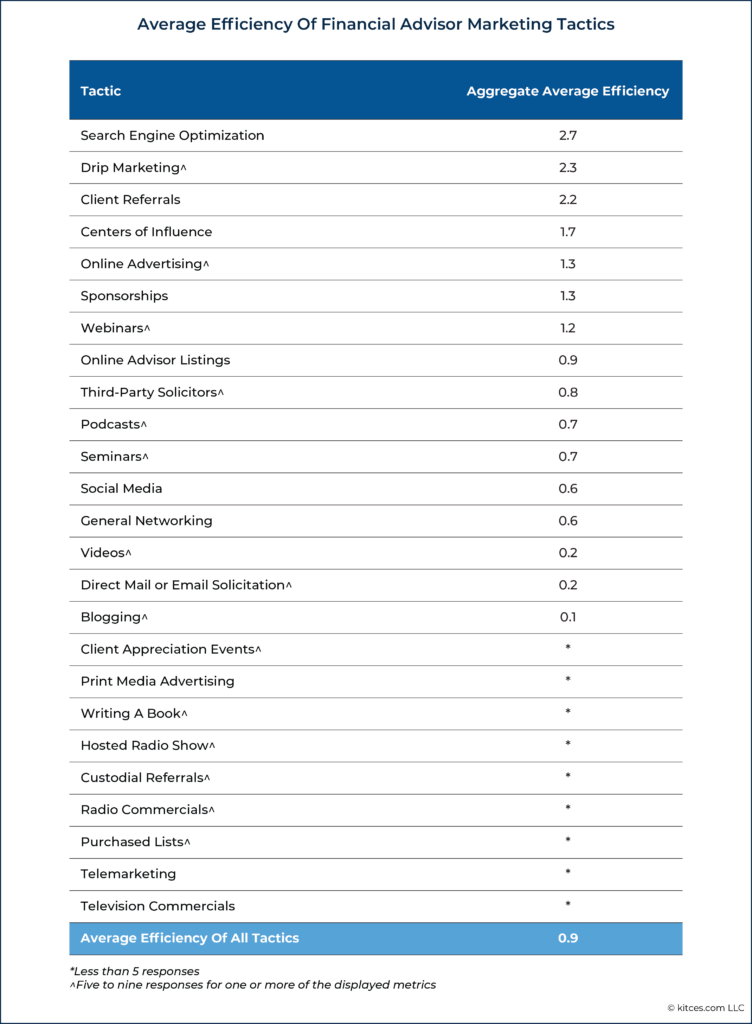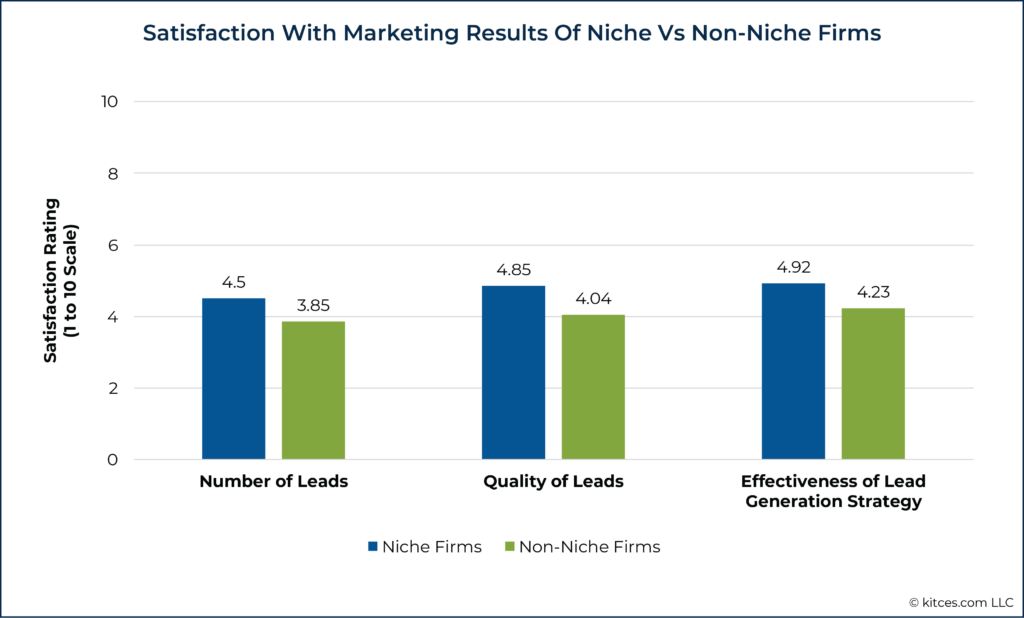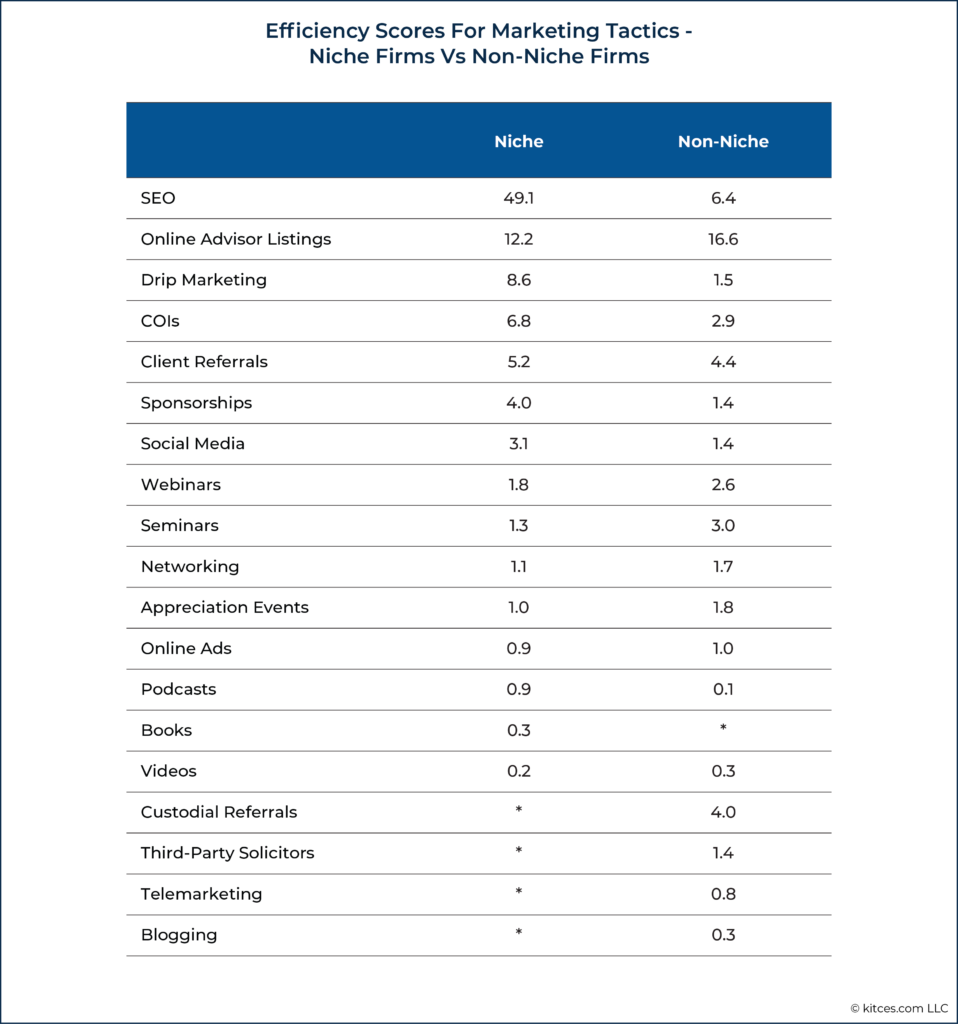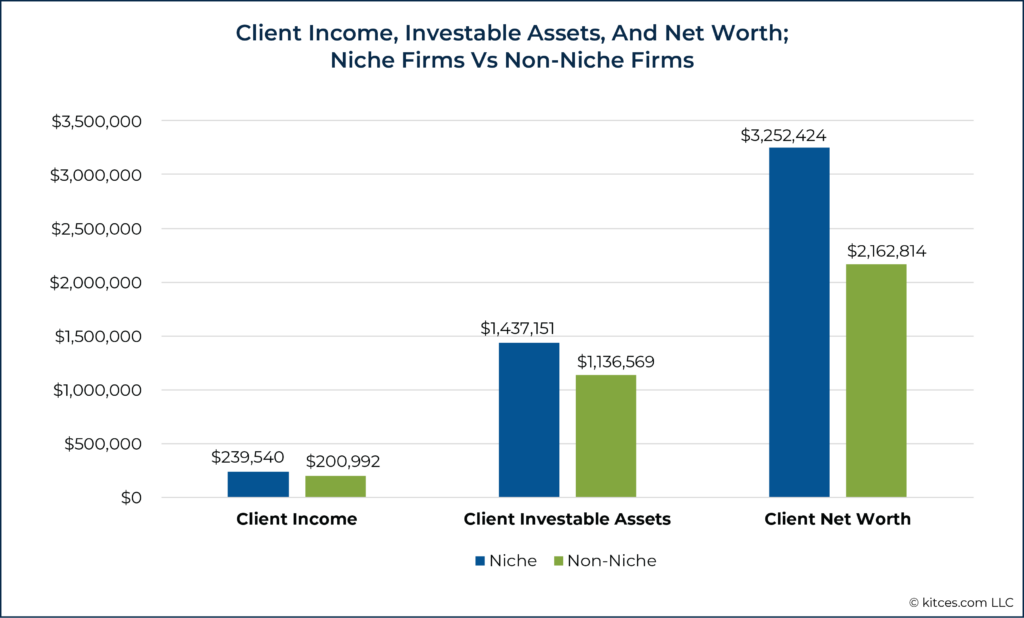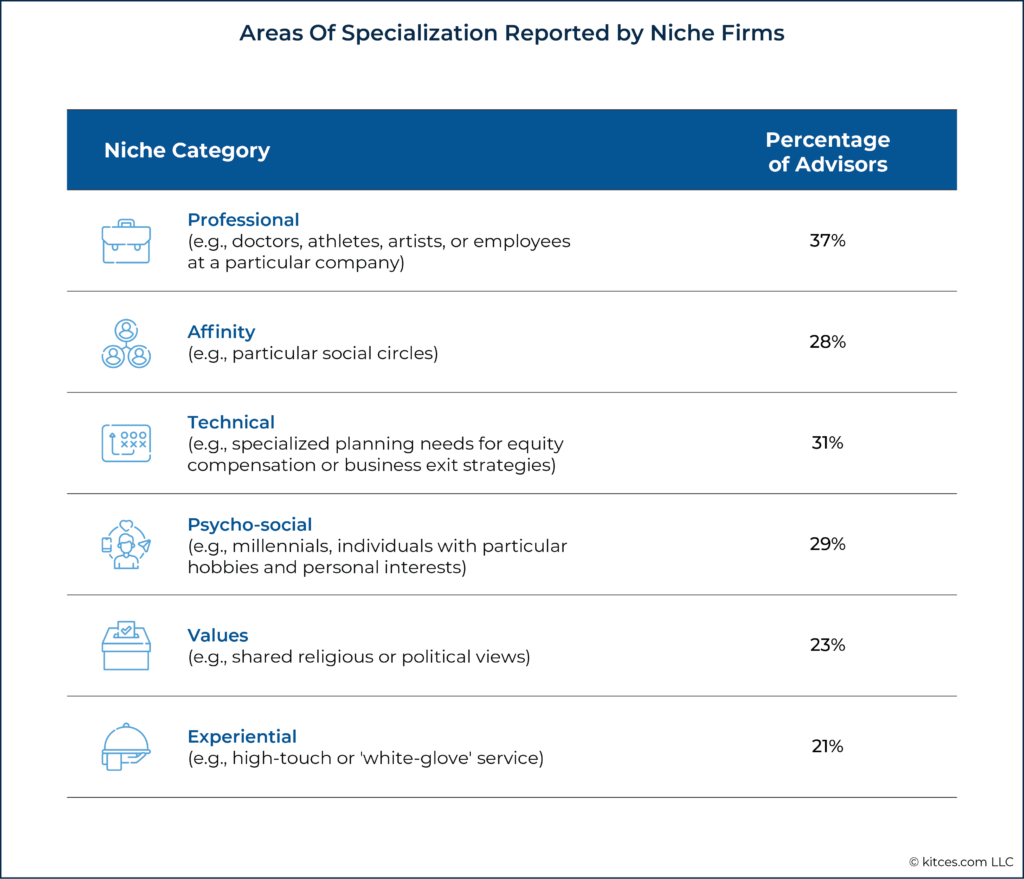Executive Summary
Many financial advisors start their own firm because of an entrepreneurial itch, a desire to work with a specific type of client, or perhaps because they want to have more control over their work life. But typically, the opportunity to create and implement a marketing strategy is not one of these reasons. In fact, data from the latest Kitces Research study, How Financial Planners Actually Market Their Services, shows that many advisors find marketing to be difficult and not very effective. For instance, out of the 25 marketing tactics reviewed, only 6 of them had a success rate (defined by the acquisition of at least one new client during the past year as a result of the tactic) of at least 70%. In addition, advisors surveyed were largely dissatisfied with the results of their marketing efforts in terms of generating leads, as well as the quality of those prospects. Finally, the study found that in general, advisor marketing tactics are relatively inefficient overall, failing to recoup the costs of the tactic from the first year of revenue generated by new clients.
Nonetheless, one group of advisors reported more marketing success than others: those serving client niches. For instance, niche firms have greater satisfaction with the number of leads received, the ‘fit’ of the prospects with the firm, and the effectiveness of their lead generation strategies when compared to non-niche firms. Further, niche firms reported greater marketing efficiency levels than non-niche firms with respect to most marketing tactics used. In particular, niche firms had significantly higher efficiency scores than non-niche firms when using search engine optimization and drip marketing, two tactics that require relatively little of an advisor’s time to implement. These advantages likely contributed to niche firms’ higher average client growth rate (58%) compared to non-niche firms (26%).
While choosing a niche can seem challenging for firm owners, using a methodical process can help an advisor choose a niche they can serve effectively. First, an advisor can consider the many niche options from which to choose, including professional (e.g., doctors or employees of a certain company), technical (e.g., equity compensation), values-based (e.g., shared religious or political views), and affinity (e.g., frequent travelers) niches. To help narrow down the possibilities, an advisor can consider the types of problems they solve well, any special skill sets they might have (e.g., tax planning or working with blended families), as well as the type of clients they like working with the most. Next, the advisor can decide on the specific services they would want to provide to clients in that niche based on the advisor’s skills and interests, as well as the needs of those in the niche group. Finally, the advisor can create a marketing plan to target that niche, which, as research has shown, is likely to be more successful than marketing to a broader audience.
Ultimately, the key point is that while marketing is a challenge for many advisors, choosing a client niche can make a firm’s marketing efforts more effective and efficient. And while selecting and implementing a niche takes work, research shows that it can pay off not only in better marketing, but also in greater growth for the firm as well!
Financial Advisor Marketing Is Challenging And Unenjoyable For Many
For many financial advisors, marketing can be challenging. Some people go to school to understand how to do it and they still think it is difficult. Which means that for many advisors who have not studied marketing, it is natural for them to find the marketing process challenging. And, in fact, our most recent Kitces Research study, How Financial Planners Actually Market Their Services, supports that many financial advisors actually do find that marketing their services successfully is not easy. Out of the 25 marketing tactics reviewed, only 6 of them had a 70% success rate or higher. These tactics include client referrals, COIs, general networking, third-party solicitors, and custodial referrals. The 19 other tactics had success rates lower than 70%, many of them far below 70%. And when weighted equally, all tactics combined had only an average success rate of 55%.
Notably, our study defined “success” as advisors who got at least (and often only) 1 client from a particular marketing tactic in the span of a year. Which means that for most tactics, it is not uncommon for advisors to go through an entire year with no results to show from using the tactic… and that is understandably frustrating and very unsatisfying.
Another finding from the Kitces Research study suggested that most advisors aren’t satisfied with their marketing experience. Our data showed that advisors’ average satisfaction with business leads generated by their marketing efforts, and the overall success of marketing tactics in general, is low. In other words, advisors are generally unhappy with their marketing efforts and the leads that are generated, presumably because of the high cost in terms of time and dollars and the relatively low effectiveness of the marketing tactics they use.
In addition to relatively low success and satisfaction ratings, the Kitces Research study also examined marketing efficiency, as determined by new client revenue attributable to a marketing tactic that was generated in the first year the tactic was implemented, divided by the expense of the tactic. Which means that a score of at least 1 would be required for a marketing tactic to be considered efficient, representing revenue equal to or greater than the marketing cost to acquire the client(s) who created the revenue.
While the highest marketing efficiency was reported for drip marketing (2.3) and the lowest was reported for blogging (0.1), the aggregate average marketing efficiency for all tactics was 0.9, suggesting that in general, marketing tactics used by financial advisors are relatively inefficient overall. As while it can be challenging to determine the right mix of marketing tactics to use, some advisors may find that implementing only 1 or 2 tactics may be their best option.
Niche Firms Find Marketing More Satisfying And Even Attract More Lucrative Clients
While the Kitces Research study showed that financial advisors generally do not enjoy marketing and consider it an unrewarding task, our results did find that advisors who had niches tended to be a bit happier with their marketing efforts.
For instance, when compared to non-niche firms, niche firms have greater satisfaction with the number and quality of their leads, as well as the effectiveness of their lead generation strategies. While these might not be dramatic differences, even these small differences could add up over time as they relate to, for instance, having the motivation to actually start creating a marketing plan or trying a new marketing tactic. Finding ways to have greater satisfaction and enjoy even the tougher parts of one's job is always a good thing.
In addition to being more satisfied with the leads they generate, and how they generate those leads, niche firms even appear to be a bit more efficient when it comes to certain marketing tactics. In fact, niche firms reported greater levels of efficiency when compared to non-niche firms with respect to most marketing tactics used. Niche firms reported an efficiency score greater than 1 for all but 4 marketing tactics. Which means that niche firms generally recoup their marketing dollars through most of the marketing tactics they use.
In particular, niche firms do extremely well when it comes to SEO, with an efficiency score more than 7 times higher than non-niche firms. Drip marketing is another tactic that niche firms use very efficiently, with an efficiency score of 8.6, nearly 6 times higher than non-niche firms. Interestingly, and quite fortunately for niche firms, both SEO and drip marketing tactics require relatively little of an advisor’s time to implement.
Furthermore, in addition to having (slightly) higher satisfaction levels, niche firms had substantially higher client growth rates than non-niche firms, with niche firms reporting an average client growth rate of 58%, compared to non-niche firms with only 26%!
Notably, while this dramatic difference in growth rates might be attributable to newer niche firms starting from a smaller client base (since client growth tends to happen naturally for new firms just starting out and intentionally targeting growth), it is also striking to compare how client income, investable assets, and net worth compare between niche and non-niche firms, where niche firms tend to have higher values across all 3 metrics.
Given that niche firms report more satisfaction than non-niche firms with both their marketing process and results, and also tend to enjoy relatively higher marketing efficiency scores with less-resource-intensive tactics (e.g., SEO and drip marketing), it may be worth considering the valuable time tradeoffs and potentially more enjoyable process of implementing marketing tactics that can come with practicing as a niche advisor.
How Non-Niche Advisors Can Find And Develop Their Own Successful Niche
Deciding on a niche can be difficult and stressful for advisors who have never considered going niche before, as ‘analysis paralysis’ can often make it a challenge to simply get started in the first place and find the momentum to move forward. While some advisors may hesitate to commit to servicing only 1 niche, data from the Kitces Research study suggests that advisors often choose more than just profession-based niches, and firms often do choose to service more than 1 niche while sustaining a successful business (as several niche firms in our survey indicated that they serviced more than 1 niche). Which means that advisors don’t need to commit to only 1 niche if they want to market a niche with intersecting qualities.
The table below shows that only 37% of the niche firms surveyed based their target niche on a particular profession. Which means there is a wide range of other areas for advisors to consider, from tax planning to young families, blended families, charitable givers, wine lovers, and even dog (and cat!) people… that other niche firms also target and successfully service.
While identifying a niche is the first step, identifying how the advisor wants to service their chosen niche is the second step. In considering this step, advisors can consider the clients that they already work with, the types of clients they enjoy working with the most, particular problems they solve well and enjoy the most, and any special skill sets the advisor may have (e.g., taxes, divorce planning, or working with blended families or special needs individuals).
Advisors can ask themselves the following questions to get some ideas for choosing a niche and identifying the services that they want to provide to their niche:
- Are there common categories that my current clients can fall into? (e.g., professional designations, specialized planning needs, shared values, etc.)
- Are there any recurring issues that tend to come up for my clients? (e.g., debt planning needs, charitable giving, stock options, equity compensation)
- Which of these common issues do I enjoy solving?
- Which of those do I solve well and how do I approach the problem for clients? Identifying not only issues you can solve well, but also how you address them is relevant, as many prospects are interested in how their advisor will solve their problems just as much as they need to know that they can solve them.
Example: Tim is thinking about going niche. Tim knows he works with quite a few lawyers with school debts, but has never gone after lawyers or lawyers with debt as an established niche. At this point, Tim takes a step back to ask himself a series of questions, and answers them as follows:
- What are the common categories that my clients fall under?
Many of them are lawyers, and many have student loan debt.
- What are the recurring themes I see?
While I can split or divide my clients in a few different ways, the most noticeable themes are that my clients are lawyers with debt, and there is also a smaller subset of lawyers with their own practices. So perhaps small business planning could be a potential niche.
- What do I enjoy working on with clients more? Debt strategies or small business issues?
I find great fulfillment in helping lawyers with their debt. I get to use a variety of skills and knowledge, and the lawyers themselves are always so motivated to take action and grateful for our work together.
- What am I doing that clients appreciate or have commented on?
I've gotten a lot of positive feedback on the recent seminars that I’ve been doing. Plus, the process I’ve developed to help organize client debt and choosing a strategy to pay it off has been really well received. The clients feel empowered with their plans, and I’ve received positive feedback – and even some referrals! – because of that process. I think I could discuss the process a bit more formally in prospecting meetings.
Once advisors choose their niche and identify the services they want to offer, the next step is to start talking about the niche to get it off the ground – start by sharing your plans with clients and centers of influence, and also through other networking channels. Conversations with clients who fall into the advisor’s new niche may start off with something like this:
I have really enjoyed our work together and would like to hear your ideas on how I could meet other individuals like you. I have been thinking about talking more about my process for debt repayment strategies for younger lawyers in particular; is there anything else you believe would be most helpful for other new clients with the same needs?
Once the advisor and client discuss anything the client has to add, the advisor can then ask that the client share these new ideas with friends and colleagues who could also benefit from the same services.
For current clients who are not in the advisor’s newly identified niche, advisors might broach the topic as follows:
I realize that debt repayment strategies are not high on your list of needs, but I wanted to bring this up with you because I am looking to expand my practice to specialize in helping younger lawyers with debt. Don’t worry – this shift will in no way impact our relationship; we will continue working together as we always have. However, I will start offering special seminars targeted at lawyers that address student loan planning, and if it ever makes sense for you to spread the word to anyone you know that I specialize in this area, I would appreciate it.
The goal of these client conversations, as with COIs, is simply to provide clarity about what the new niche is. The advisor can experiment with talking more about the niche (with prospects, clients, and COIs) and writing about it (through blog posts and/or presentations). At the same time, they can also explore the best ways for them to convey their message clearly and simply through their marketing strategy when it comes to identifying who the advisor serves and how.
Ultimately, the clearer the advisor can be about their new niche, the more satisfaction that advisor will likely enjoy from increased leads arising from their marketing efforts. But just as valuable (if not more so) will be the types of leads who walk through the door, as they will be prospects who the advisor will be more likely to enjoy working with and able to serve effectively. Notably, while it may take some time to find the exact verbiage that feels most natural to the advisor and that sticks with COIs and clients, advisors are likely to find the work worth the effort and should be encouraged to experiment, as simply having a clearly identified niche can not only improve the quality of prospects they attract, but also make the process of marketing more enjoyable!


